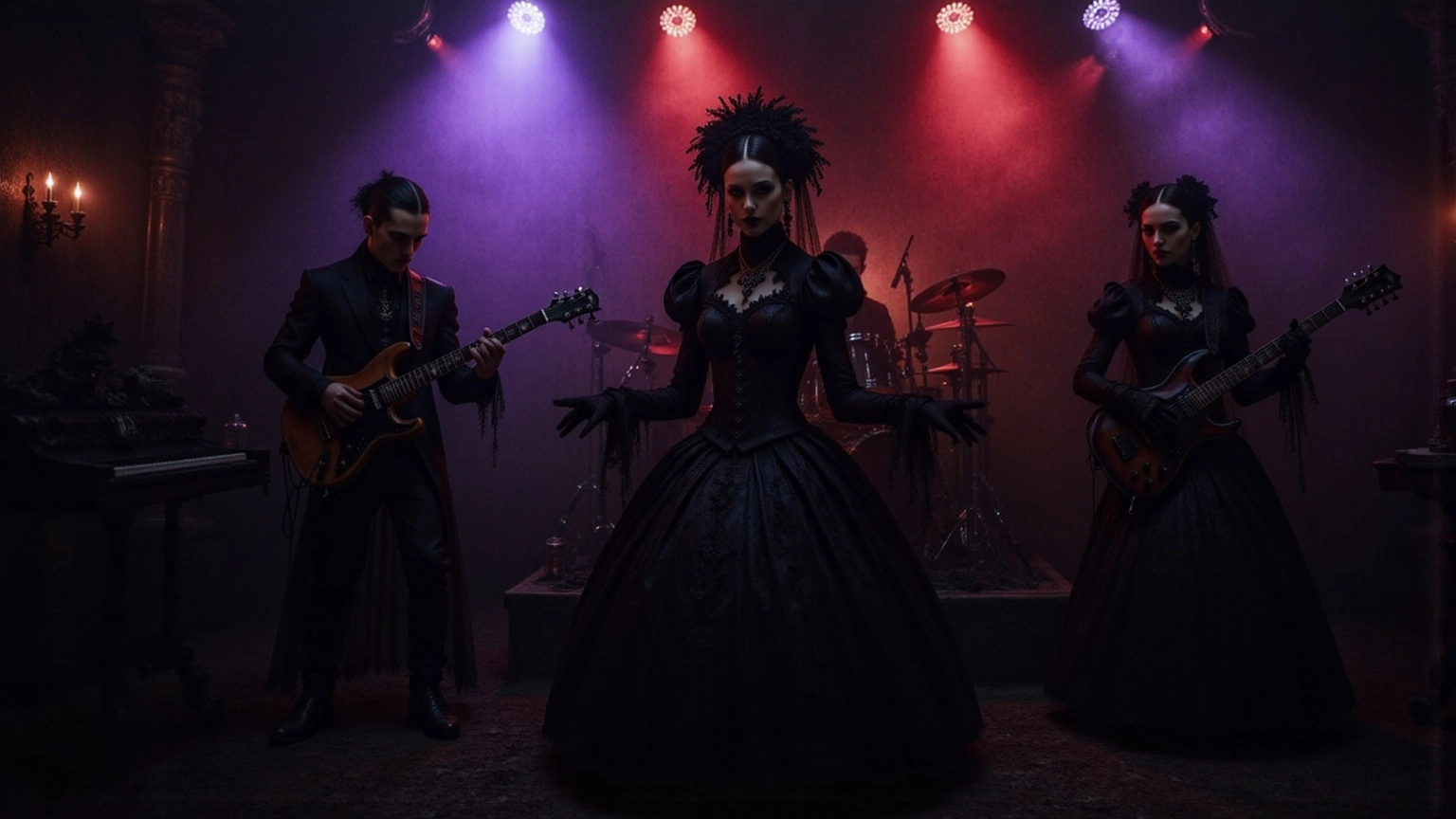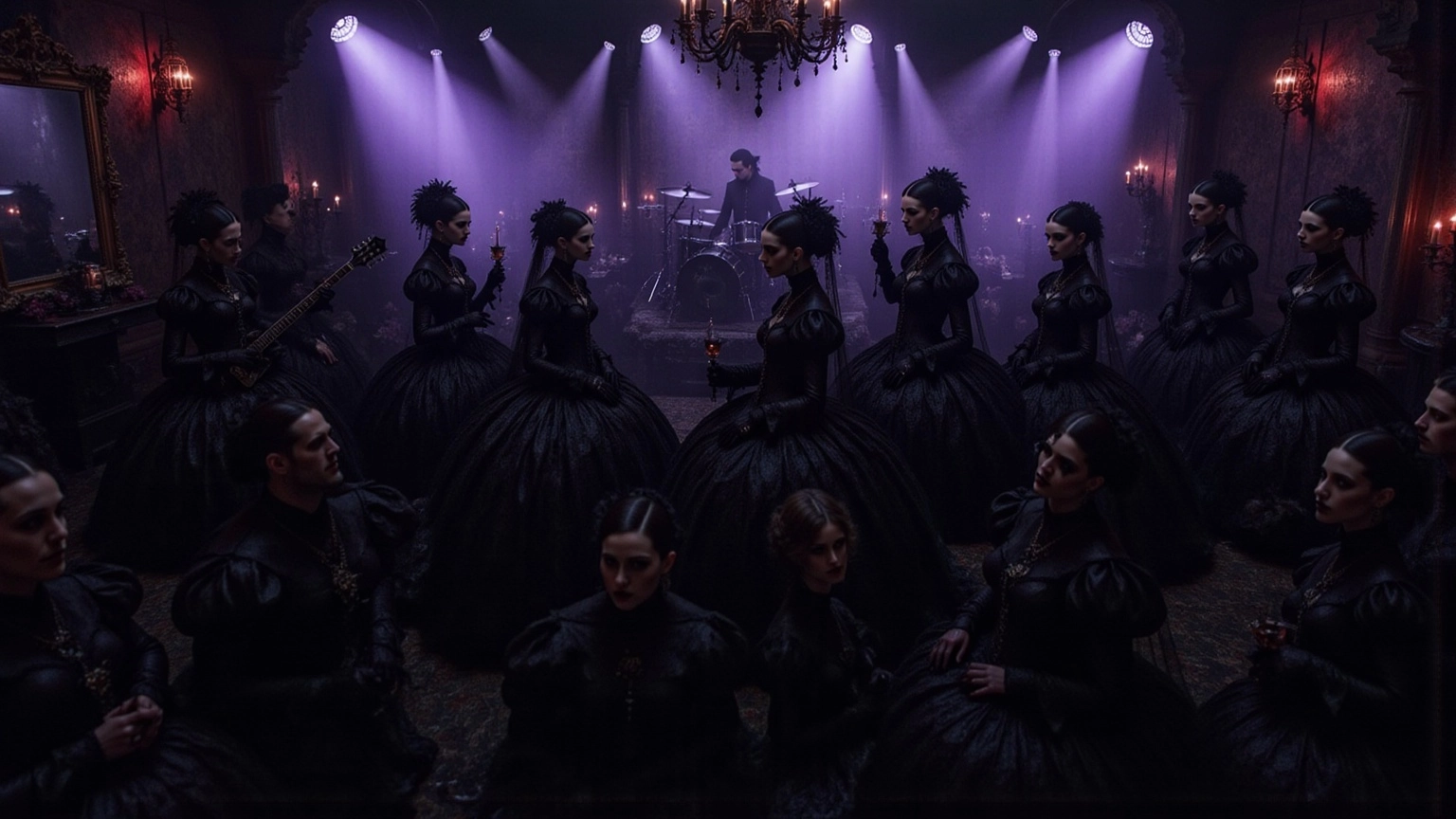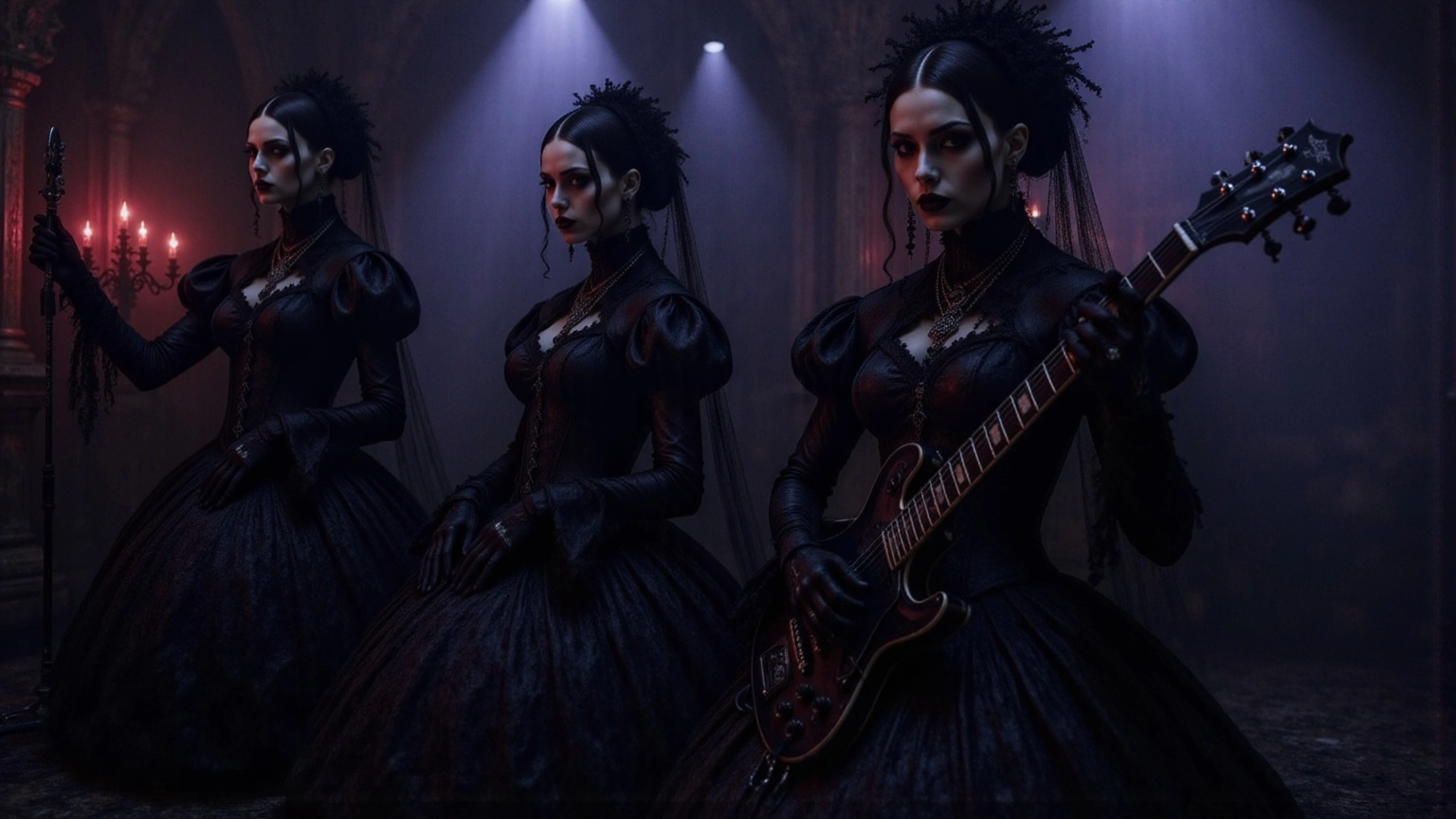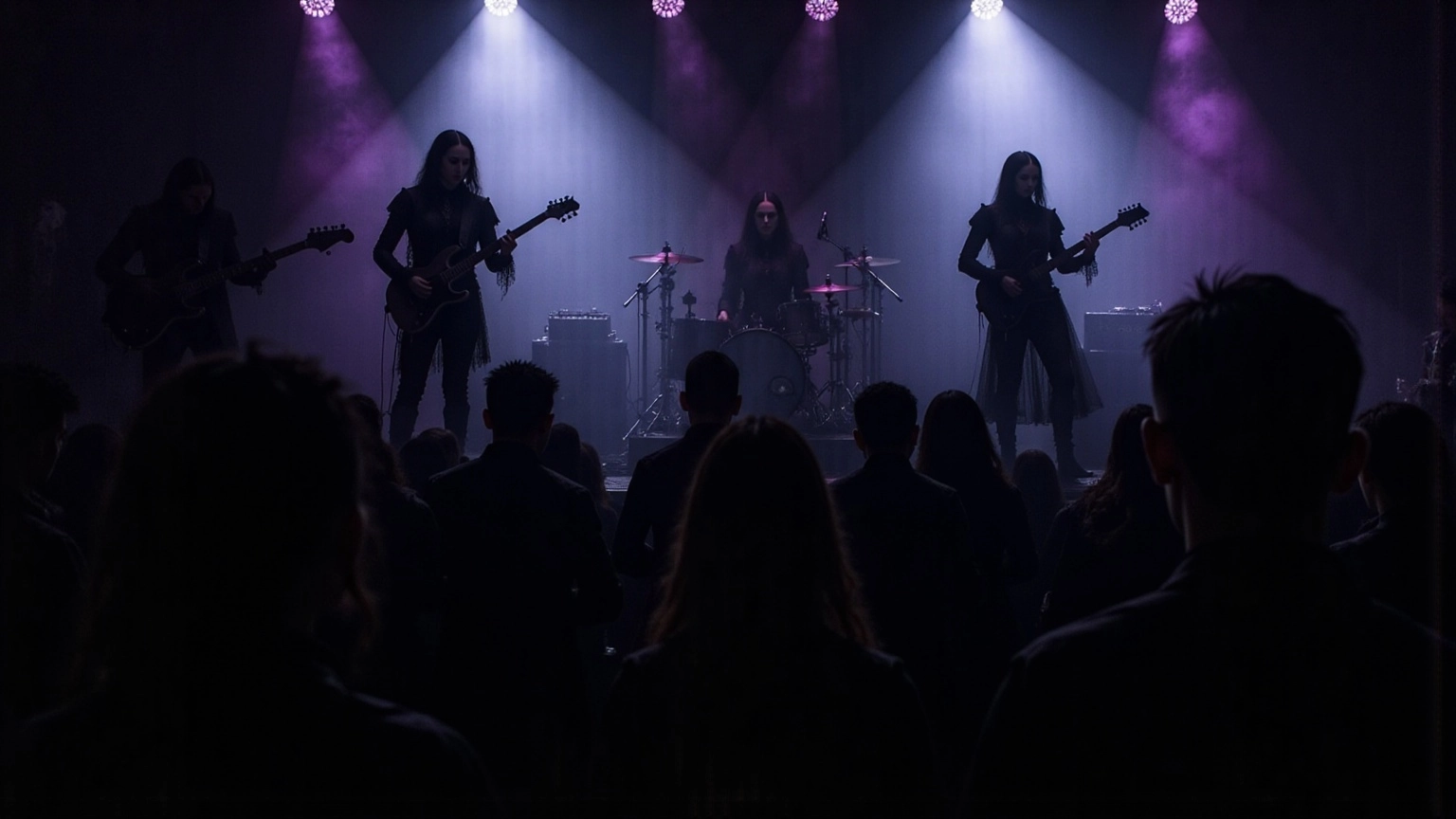Understanding Goth Rock Bands: Origins, Characteristics, and Icons
Share
Overview
Goth rock bands emerged from the shadows of the late 1970s, a rebellious response to punk's raw energy. Dark themes, atmospheric sound, and striking fashion coalesce into a cultural movement that refuses to be ignored. Influential acts like Bauhaus and Siouxsie and the Banshees illustrate this evolution, weaving together music, literature, and community.
What do these threads reveal about our connection to art? The impact of goth rock lingers, shaping artists and fans alike, inviting us to delve deeper into its haunting legacy.
Introduction
Goth rock—a genre steeped in shadows and introspection—burst forth in the late 1970s, fusing the raw pulse of punk with haunting melodies and profound themes of love, loss, and the supernatural. This article plunges into the rich tapestry of goth rock bands, unearthing their origins, distinctive traits, and the iconic figures who have carved the genre over the decades. Yet, as this cultural phenomenon thrives, it wrestles with misconceptions and challenges that threaten its very essence.
What lies at the core of goth rock's enduring allure? How does it continue to resonate with new generations?
Defining Goth Rock Bands: An Overview of the Genre
Goth music—a haunting subgenre born in the late 1970s—thrives on darkness, weaving existentialism, romance, and the macabre into its very fabric. Emerging from the post-punk movement, it melds punk's raw energy with a somber, introspective aesthetic. Picture this: haunting melodies, deep, resonant vocals, and a fusion of electronic and traditional instrumentation, crafting a soundscape that resonates deeply with the gothic subculture.
Alternative music groups don theatricality like a second skin, their lyrics often plunging into darker themes. Consider Bauhaus and Siouxsie and the Banshees—two influential goth rock bands with a sound and visual style that captivates. The 1980s saw this style explode, with venues like The Batcave in London becoming the heartbeat of the goth rock bands scene, providing a sanctuary for fans and musicians alike.
But goth rock isn't just music; it spills into fashion, literature, and art, forging a cultural movement that envelops everything. The visual allure is mirrored in the fashion choices of its followers—dark attire, striking makeup, and accessories that conjure intrigue and sophistication. Events like the Wave-Gotik-Treffen in Leipzig amplify this cultural significance, drawing tens of thousands each year to celebrate the subculture and its artistic expressions.
Traditional gothic literature has also shaped the essence of alternative music. Writers like Edgar Allan Poe and Washington Irving cast long shadows, influencing themes and visuals. As Jess Nevins aptly noted, 'Steampunk is what happens when dark subculture enthusiasts discover brown,' a testament to the evolution of gothic aesthetics.
In essence, alternative music transcends mere sound; it’s a cultural phenomenon intertwining music, fashion, and a shared identity among its followers. This artistic connection mirrors Darc Arts' commitment to high-quality THCA products, emphasizing elegance and the cultural significance of cannabis. THCA, or Tetrahydrocannabinolic Acid, is a cornerstone of premium cannabis, offering potential therapeutic benefits without the psychoactive effects of THC. Dive into the gothic allure of premium cannabis experiences with Darc Arts, where elegance and intrigue echo the dark music genre and the refined lifestyle it inspires.

Origins and Evolution of Goth Rock: From Post-Punk to a Distinct Genre
In the late 1970s, goth rock bands erupted as a fierce response to punk's raw energy, primarily in the United Kingdom. Goth rock bands like Bauhaus and Siouxsie and the Banshees delved into darker themes and sounds, paving the way for the evolution of gothic music. By the early 1980s, a subculture emerged, marked by its distinctive fashion, literature, and music. Dark rock evolved, weaving influences from new wave, industrial, and metal into a rich tapestry of sounds and approaches.
The dark subculture thrived, with iconic venues like the Batcave in London and festivals such as Castle Party in Poland igniting a sense of community among fans. By the mid-1980s, goth rock bands such as The Sisters of Mercy and The Mission surged in popularity, further sculpting the genre's sound and aesthetic. A study of 1,258 youth revealed that this alternative subculture is profoundly nonviolent and tolerant, offering vital social and emotional support to teens grappling with self-harm and mental illness.
As gothic music continued its ascent, it morphed into a cultural phenomenon, entwining with literature and visual arts, influencing a generation of creators and musicians. Today, goth music stands as a vital force in the musical landscape, celebrated for its artistic depth and enduring allure.

Key Characteristics of Goth Rock Bands: Sound, Themes, and Aesthetics
Goth rock—it's not just music; it's a haunting echo in the shadows. Deep, resonant vocals intertwine with atmospheric guitar riffs, enhanced by synthesizers that dance alongside traditional rock instruments. The lyrics? They plunge into the abyss, exploring love, loss, death, and the supernatural, drawing inspiration from the dark corners of gothic literature and art.
Fashion within this genre is a bold declaration of individuality. Think dark clothing, dramatic makeup—each piece a canvas for self-expression. But goth rock transcends mere aesthetics; it nurtures a community. Studies reveal its profound impact on youth, offering emotional support that resonates deeply. A study of 1,258 young souls highlights this, showcasing the alternative subculture as a lifeline.
Historian Pete Scathe observes the evolution of dark fashion, a metamorphosis from punk roots to a unique identity blooming in the 1980s. This distinctive blend of sound, themes, and aesthetics doesn’t just define gothic music; it creates a sanctuary for exploration within a turbulent cultural landscape. Yet, it faces challenges—media misrepresentation and moral panic often cloud the essence of goth rock bands, especially in the aftermath of tragedies like Columbine.
Icons like Siouxsie Sioux and Robert Smith, important figures in goth rock bands, are the architects of this legacy, their influence echoing through generations. They inspire a new wave of fans, ensuring that the spirit of goth rock bands continues to thrive. So, what are you waiting for? Dive into the shadows and embrace the allure of this captivating world.

Influential Goth Rock Bands: Pioneers and Modern Icons
Dark music has a pulse, a heartbeat that echoes through the shadows. Bauhaus, the harbinger of dark wave, crafted a haunting anthem with 'Bela Lugosi's Dead.' They didn't just set the tone; they ignited a movement. Siouxsie and the Banshees pushed boundaries further, while goth rock bands such as The Cure and Sisters of Mercy dragged the darkness into the limelight. Fast forward to today, and you see bands like Evanescence and Nightwish weaving dark threads into their melodies, proving this genre's grip is unyielding. These goth rock bands didn't merely define the genre; they ignited a fire, inspiring new generations to explore its intoxicatingly dark and enchanting themes. Are you ready to explore the depths of this sonic abyss?

Conclusion
Goth rock is a haunting testament to the fusion of music, culture, and identity, emerging from the shadows of the late 1970s to carve out a distinct genre. This captivating subculture interlaces chilling melodies and introspective themes, crafting an immersive experience that resonates deeply with its followers. The genre's evolution from post-punk roots into a multifaceted cultural movement showcases its enduring allure and significance in the artistic landscape.
Key insights reveal the rich tapestry that defines goth rock:
- From iconic bands like Bauhaus and Siouxsie and the Banshees
- To the intricate interplay of sound, themes, and aesthetics
Goth rock transcends mere musical expression. It fosters a sense of community and serves as a vital emotional refuge for many, particularly the youth grappling with life's complexities. The influence of gothic literature and the bold fashion choices of its fans amplify the genre's cultural impact, establishing a unique identity that thrives.
Embrace the dark allure of goth rock and delve into its artistic and emotional depths. As this genre evolves, it remains a powerful vehicle for self-expression and connection, urging individuals to explore the shadows and celebrate the beauty found within the darkness. Through music, fashion, or literature, the gothic subculture offers a sanctuary for those seeking to understand and embrace their identities in a chaotic world.
Frequently Asked Questions
What is goth rock music?
Goth rock is a haunting subgenre of music that emerged in the late 1970s, characterized by its dark themes, existentialism, romance, and the macabre. It blends the raw energy of punk with a somber, introspective aesthetic.
What are the typical musical elements of goth rock?
Goth rock features haunting melodies, deep, resonant vocals, and a fusion of electronic and traditional instrumentation, creating a soundscape that resonates with the gothic subculture.
Which bands are considered influential in the goth rock genre?
Bauhaus and Siouxsie and the Banshees are two influential goth rock bands known for their captivating sound and visual style.
How did the goth rock scene develop in the 1980s?
The goth rock scene exploded in the 1980s, with venues like The Batcave in London becoming central hubs for fans and musicians, fostering the growth of the genre.
What cultural aspects are associated with goth rock?
Goth rock extends beyond music into fashion, literature, and art, forming a cultural movement characterized by dark attire, striking makeup, and intriguing accessories.
What events celebrate the goth subculture?
Events like the Wave-Gotik-Treffen in Leipzig celebrate the goth subculture, drawing tens of thousands of attendees each year to honor its artistic expressions.
How has gothic literature influenced goth rock?
Traditional gothic literature, with authors like Edgar Allan Poe and Washington Irving, has significantly influenced the themes and visuals present in goth rock music.
What is the connection between goth rock and cannabis culture mentioned in the article?
The article draws a parallel between the artistic connection of goth rock and Darc Arts' commitment to high-quality THCA products, emphasizing elegance and cultural significance in both the music genre and refined cannabis lifestyle.
